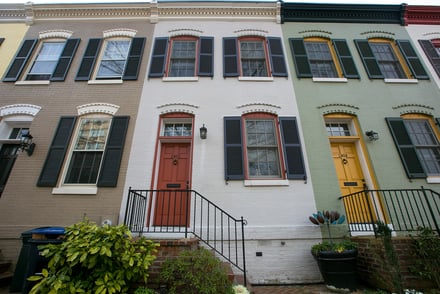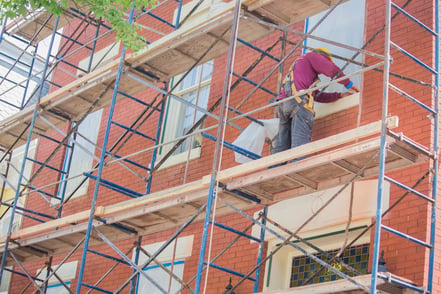You have a never-quite-finished list of exterior maintenance and repair issues to manage if you own an older brick home. These maintenance projects can be time-consuming, and you may not have the budget or time to address everything that needs attention at once. But, on the other hand, letting some issues go too long can lead to collateral damage, additional costs, and big headaches down the road.
So how do you know what projects to tackle first and which ones can wait a bit longer? Is there an ideal maintenance routine that can save time, money, and trouble? The answer is "yes." You can create a plan for maintenance throughout the year. Your exterior maintenance schedule will be unique to your home's location, age, circumstances, and current condition. Still, most older homes with four seasons have similar needs and order of importance year-round. Below is a general exterior maintenance checklist for you to adapt to your situation.
Weekly to Monthly
Routine tasks to prevent future problems and keep your exterior tidy:
- Check for gutter debris – Don't wait to do this once or twice per year. Look at your gutters regularly to avoid overflow and damage.
- Basic garden & lawn care – Watering, mowing, and trimming. In winter, this reverts to regular ice and snow removal.
- Trash & recycling – Ensure that refuse or debris is not allowed to accumulate outside sealed containers on the lawn, sidewalk, or adjacent alley. Not only is it unsightly, but it also invites pests and may fall apart with weather or a little human help.
Three months - Beginning of Seasons
When the seasons begin to change, it's an excellent time to take stock of minor repairs that may be needed. These are done if necessary, depending on the weather and the extent of the damage.
- Inspect exterior for damage – In between annual inspections, keep an eye on your exterior facade, and perform easy maintenance or repairs when necessary.
- Caulking – It doesn't take long to check windows and door frames for leakage. Some simple caulking or weatherstripping will keep cold and damp outside, save on energy bills, and avoid future water damage.
- Landscaping – Feeding and winterizing lawn and gardens. Each season brings tasks that are season-specific. Many urban gardens are more about hardscapes than lawns. If that applies to you, check exterior masonry for signs of upheaval, cracking, or other deterioration.
Annual
These tasks are best done once each year, but not necessarily at the same time. Since any of these may result in repair costs, perhaps choose alternate seasons to address each one. If repairs are needed, this is generally the order of importance for each type of repair.
- Brick exterior inspection – Brick inspections are recommended in the spring or fall. How rough was the previous winter? A harsh season can result in damage that may appear minor now but will worsen over time. If you haven't had a historic brick and mortar expert recently assess the condition of your old brick exterior, or if you have questions about what you see, make this a priority. Deferred maintenance on old brick and mortar leaves your home vulnerable to additional damage that will cost more to repair as time goes by.
- Roof inspection and repair – Like a brick inspection, spring and fall are the best times to do this. However, fall is an excellent time to make sure your roof is in tip-top shape for the upcoming winter. And don't forget those rain gutters and downspouts!
- Planting – Fall and spring are the optimal times to schedule planting and hardscaping, based on your urban garden preferences. Tree roots can wreak havoc with patios and raised garden beds. If this sounds familiar, it may be time for a professional consultation. If your lawn needs replanting due to previous damage or drought, options include sod or seed. Late summer and early fall are the best times of year for seeding a lawn in Washington DC.
When it comes to maintaining and repairing your brick facades and exterior masonry, contact Renaissance Development to schedule a whole-property assessment. It's good to know what to watch for to plan ahead and avoid significant problems down the road.
10/14/21 10:07 AM

